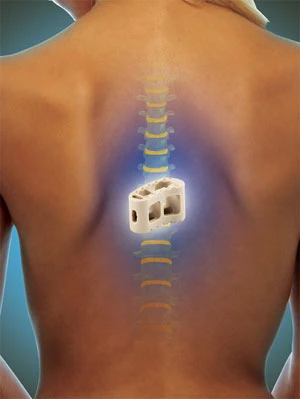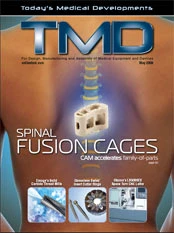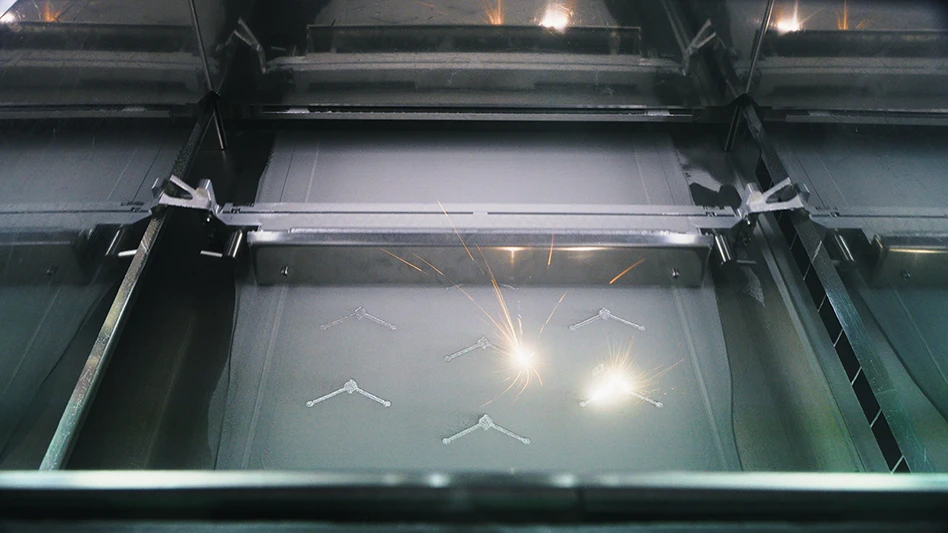
In the southeast corner of Lakeville, MN, a suburb of Minneapolis, Mendell, Inc has come a long way since its founding in 1965. The company started redefining itself in 1992, the year Bryan Bartz became general manager. Until then, it had focused on defense work, which was already waning when Bartz arrived, and which was soon supplanted with semiconductor, data storage and general equipment.
In 1999, Bartz bought the company, initiated strategic planning and uncovered company strengths, capabilities and competition. Discoveries included good employee knowledge of medical device manufacturing, and skills and values that fit the medical market – being meticulous about accuracy, and being driven to get things done.
Influenced by its location in the heart of Medical Alley – named for the hundreds of healthcare companies in the region – the company found its identity. To realize it, Mendell pursued medical prospects and developed a customer base that provides 90% of its business. The 57 Mendell employees use assorted technology, including 28 machine tools and three seats of GibbsCAM software, to produce implantable devices, surgical instruments and diagnostic equipment, as well as parts for aerospace, defense and chromatographic equipment.
"Our success is almost entirely attributable to our employees," says Steve Storlie, VP of sales and marketing. "Their commitment and desire to do things, and get them right, made us successful. With the best technology, we would not be who we are without people who use it to the best advantage. We are a product of great people, cooperation, and great technology."

Mendell is in the process of fully implementing GibbsCAM for Swiss machines.
When asked about Mendell's ability to retain quality employees, Bartz responds, "If you give your employees a company that is employee-friendly, that has an ultraclean environment, a family atmosphere, excellent benefits, and you maintain a practice of praise and recognition, the retention of employees is not too difficult."
Non-traditional benefits, such as annual fishing trips, in both summer and during Minnesota ice fishing season, also help. One benefit derives from Bartz' affinity to continuous learning, which helps both employees and company: Mendell pays a good portion of expenses for any employee who wishes to attend IMTS – the International Manufacturing Technology Show.
Word-of-mouth attracts the highly experienced who wish to test their skills, while a formalized training program entices the younger. Bartz, who selects employees with considerable skill, also heavily weighs their personality and attitude. "Mendell is aggressive in seeking the less experienced machinists and mentoring them to raise their skill sets to those of a highly skilled machinist," he says.
Technology, Purity
To the degree that technology factors into achievements, Storlie gives much credit to GibbsCAM, because the software's programming efficiency speeds the design-to-production process. "It's great for family-of-parts, typical of medical devices, because copying data from one part to another is drag-and-drop easy. We make and modify related parts without replicating effort, reducing hours at the control to minutes on a computer. We achieve a better finish, control tolerances to reduce variability, and really cut cycle time. Speed, consistency and accuracy are huge advantages."
For Storlie, the software's virtual aspects are powerful by themselves. "Visualization and simulation are invaluable sales tools. The software enables preliminary work without machining, and it's terrific for communicating ideas, capabilities and processes to customers."

One of a family of spinal fusion cages nearing completion of the first setup on a 5-axis CNC.
By experience and reputation, Mendell's skills drive some customers to rely on them at the design stage, disclosing new product designs early to solicit ideas. "Our customers and their market demand high quality and aesthetics in complex parts," Storlie says. "We collaborate at the outset and through several iterations before the prototype, long before prints are developed."
Applications Engineer and Head Programmer Jeremy Thon, who is involved at the beginning, explains, "Customers describe intent, and when possible, they provide tolerances for functional features. We study the CAD model, sometimes use GibbsCAM for virtual machining, and offer economic or aesthetic alternatives that retain structural integrity." The greatest challenge in making medical devices is not technical. Purity comes first; process traceability runs closely behind. The latter is mostly achieved by Mendell's continued ISO certification, while careful procedures, such as using no coolants on implantable plastics, address requirements for purity.
Mendell uses several tricks to increase accuracy and shorten lead time, beginning with fixtures. GibbsCAM software is all encompassing, allowing them to do everything without returning to CAD. Mendell uses its solid model part geometry to make the fixture first, and to achieve perfect mating between part and fixture. The software renders them together and displays the fit between them, saving Mendell a lot of time.
Mendell strives to manufacture families-of- parts, often working with an implant family of 14 different sizes. GibbsCAM cuts days off programming, setup and machining. "Worst case," Thon says, "we make interchangeable fixtures for the operator to swap, designed to locate a differently sized part at the same zero point as the previous part. We preserve our machine offsets and save the critical dial-in time of each part."
Eliminating Downtime
A spinal fusion cage, made of medicallypure PEEK, with complex geometry requiring 5-axis machining, exemplifies family-of-parts. The parts are approximately 0.300" wide and range from 3/4" to 1" in length, the largest being about 0.600" high. Each has cutouts at different angles, includes angled edge scallops, face angles and holes for tantalum pins to display orientation in radiography, since plastic doesn't reflect X-rays. All finishing and deburring is done on machine to prevent introduction of impurities.
The customer supplied CAD models, but no prints. Mendell requested four or five critical dimensions, which were provided in a minimal drawing. Thon took the first SolidWorks model directly into GibbsCAM and set locations for tipping and rotating on the trunnion-mounted 5C snap head, through which the 1" round stock would be held. With the model located in space above the rotational axes, he aligned a plane with the workpiece, and defined a plane for each cuttingtool approach angle, then extracted geometry from the model and determined cutter sizes. "The trick is determining orientation, angles of approach, and selecting all necessary geometry," says Thon. "After that, tool selection is easy."
Mendell uses the Profiler, which Thon says is a great tool for extracting geometry and driving toolpaths. He adds, "Since customer-provided solids are not always at print nominals, and we need accuracy, we extract what geometry we can, then use GibbsCAM to dimension and recreate the geometry – sometimes the solid itself – when necessary."
The software also aids in selecting tools and eliminating form cutters. By changing angles of approach, Thon usually accommodates a standard cutter. When necessary, he designs a tool with the Tool Tile, tests it with Cut Part Rendering, and makes a print to have it made. After tools are defined, he runs all operations with Cut Part Rendering to ensure accuracy.
When the first part in a family is completed, he places the next CAD model in the same location, retaining previous parameters. This saves huge amounts of time, especially for prototypes. "Setup for 14 different sizes, to make 10 of each, consumes a lot of time. GibbsCAM eliminates a couple of hours of setup and programming for each part," Thon says. This also eliminates machine change-over and idle time.
Growing More Complex
Mendell doesn't yet program Swiss turn machines with CAM, but GibbsCAM helped run the machines through the prototype and initial production of a titanium pedicle screw system, another family-of-parts application, with screws in six sizes, up to 1.25" long. Three or more of the assemblies fasten a rod across vertebrae with a swivel screw, connector and cap.
The production of the screw and connector is done on a Tornos Swiss turn, while the prototype and production of connector and cap were done on a turning center and 5-axis mill, using GibbsCAM turning and milling. "Again, we had no print," Thon says. "We worked closely with the customer to achieve the fit and function for a successful design. The saddle, a radiused component within the connector, accommodates the rod. So when the screw is implanted, turning the cap permanently locks the rod, connector, cap and screw in place."
The process for the connector and cap was similar to that of the fusion cage. Thon located the parts in space, laid out planes, extracted edge geometry, defined tooling, and programmed them for 5-axis milling, feeding bar stock through a 5C snap head, and slit-sawing off the parts, transferring them to the turning center for finishing.
Implementing GibbsCAM for Swiss machines had not been a priority because turned parts are easily programmed by "hard keying" at the control. However, increasingly complex parts are driving Mendell to begin the process. Until recently, programmers merely provided operators shape geometry and intersection radii from CAD models to make hard keying easier, occasionally providing lathe code, which operators paste into Swiss programs. "Transferring the connector code to the Tornos was much trickier," says Thon, "but GibbsCAM facilitated it by generating code for lathes with live tooling, which we pasted into Swiss programs. The screw and connector are now made entirely on Swiss machines."
Storlie is excited about the recent developments. Having just bought another new Tornos Swiss machine and two more 5-axis machines, Mendell is in the process of fully implementing GibbsCAM for Swiss machines. "We continue to add complex equipment, and we rely on GibbsCAM to drive it," he says, "so we can keep machining increasingly complex, aesthetically appealing components for the medical industry."

Explore the May 2008 Issue
Check out more from this issue and find your next story to read.
Latest from Today's Medical Developments
- HERMES AWARD 2025 – Jury nominates three tech innovations
- Vision Engineering’s EVO Cam HALO
- How to Reduce First Article Inspection Creation Time by 70% to 90% with DISCUS Software
- FANUC America launches new robot tutorial website for all
- Murata Machinery USA’s MT1065EX twin-spindle, CNC turning center
- #40 - Lunch & Learn with Fagor Automation
- Kistler offers service for piezoelectric force sensors and measuring chains
- Creaform’s Pro version of Scan-to-CAD Application Module





